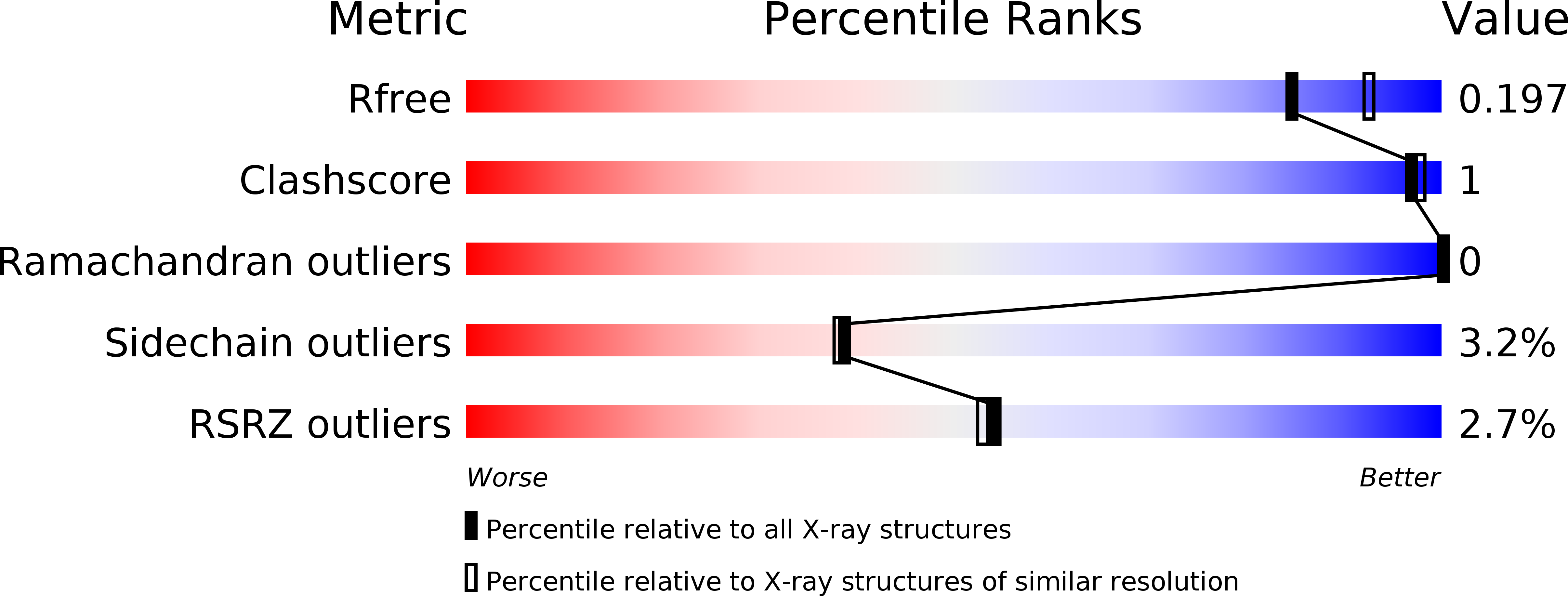Structural basis for ligand recognition by a Cache chemosensory domain that mediates carboxylate sensing in Pseudomonas syringae.
Brewster, J.L., McKellar, J.L., Finn, T.J., Newman, J., Peat, T.S., Gerth, M.L.(2016) Sci Rep 6: 35198-35198
- PubMed: 27734909
- DOI: https://doi.org/10.1038/srep35198
- Primary Citation of Related Structures:
5G4Y, 5G4Z - PubMed Abstract:
Chemoreceptors enable bacteria to detect chemical signals in the environment and navigate towards niches that are favourable for survival. The sensor domains of chemoreceptors function as the input modules for chemotaxis systems, and provide sensory specificity by binding specific ligands. Cache-like domains are the most common extracellular sensor module in prokaryotes, however only a handful have been functionally or structurally characterised. Here, we have characterised a chemoreceptor Cache-like sensor domain (PscD-SD) from the plant pathogen Pseudomonas syringae pv. actinidiae (Psa). High-throughput fluorescence thermal shift assays, combined with isothermal thermal titration calorimetry, revealed that PscD-SD binds specifically to C 2 (glycolate and acetate) and C 3 (propionate and pyruvate) carboxylates. We solved the structure of PscD-SD in complex with propionate using X-ray crystallography. The structure reveals the key residues that comprise the ligand binding pocket and dictate the specificity of this sensor domain for C 2 and C 3 carboxylates. We also demonstrate that all four carboxylate ligands are chemoattractants for Psa, but only two of these (acetate and pyruvate) are utilisable carbon sources. This result suggests that in addition to guiding the bacteria towards nutrients, another possible role for carboxylate sensing is in locating potential sites of entry into the host plant.
Organizational Affiliation:
Department of Biochemistry, University of Otago, Dunedin, 9054, New Zealand.














